Main menu
Common skin conditions

NEWS
Join DermNet PRO
Read more
Quick links
Leukoderma — extra information
Leukoderma
Author: Vanessa Ngan, Staff Writer, 2003; Updated: Katrina Tan, Medical Student, Monash University, Melbourne, Australia; Dr Martin Keefe, Dermatologist, Christchurch, New Zealand. Copy edited by Gus Mitchell. August 2021
Introduction Demographics Causes Clinical features Variation in skin types Complications Diagnosis Differential diagnoses Treatment Outcome
What is leukoderma?
Leukoderma, also called achromoderma, is a clinical sign describing a localised area of white depigmented skin due to total loss of epidermal melanin. It is not a diagnosis in itself and has many causes. Leukoderma must be distinguished from hypopigmentation, which is pallor due to reduced pigmentation.
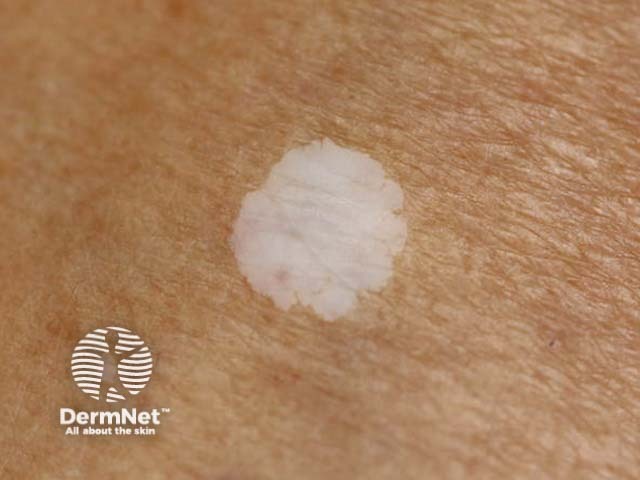
Idiopathic guttate hypomelanosis
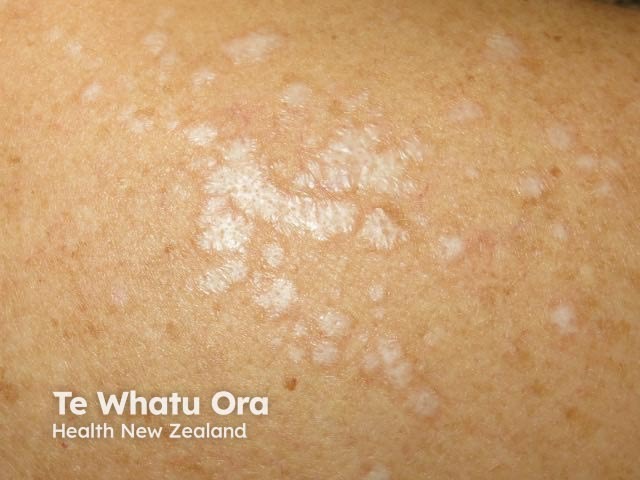
Lichen sclerosus
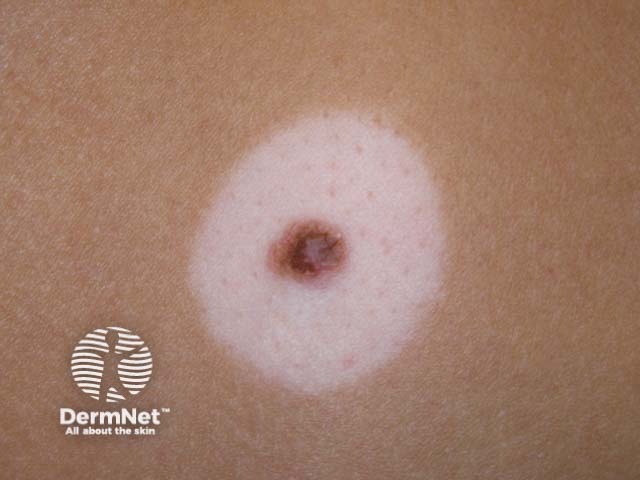
Halo naevus
Who gets leukoderma?
Leukoderma can be seen in people of all ages and races, and both sexes. There may appear to be a female predominance due to cosmetic concerns. Leukoderma is more apparent in skin of colour than in ethnic white skin, but prevalence rates are difficult to determine.
What causes leukoderma?
Leukoderma is the visible result of loss of epidermal melanin. Melanocytes may be absent or present but unable to synthesise melanin or transfer it to the keratinocytes. There are many causes of leukoderma — some are listed below.
- Autoimmune diseases
- Scarring
- Severe skin disease — atopic dermatitis, allergic contact dermatitis, Stevens-Johnson syndrome/toxic epidermal necrolysis
- Infection — herpes zoster
- Burns and other injuries
- Procedures — cryotherapy, chemical peels, laser treatment
- Chemical leukoderma including occupational and contact leukoderma
- Drug-induced vitiligo (leukoderma)
- Congenital patterned leukoderma
- Miscellaneous
- Idiopathic guttate hypomelanosis
- Halo naevus
- Melanoma-associated leukoderma
- Onchocerciasis - 'leopard skin' appearance
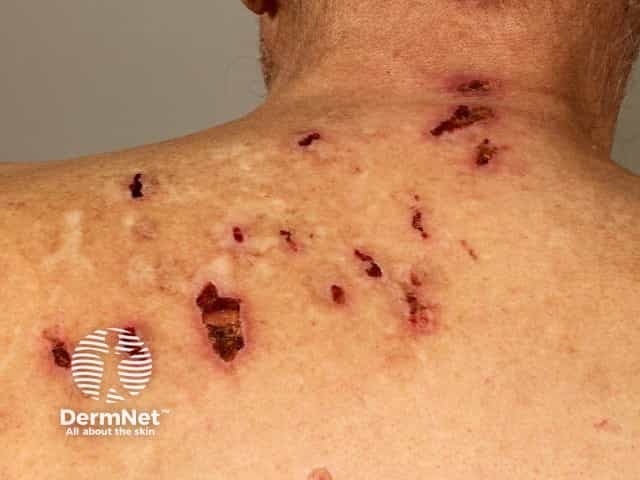
Leukoderma and compulsive picking
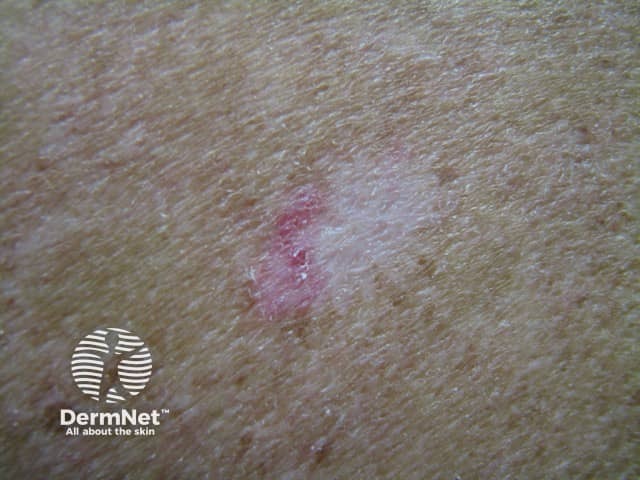
Cryotherapy-induced leukoderma with recurrent BCC
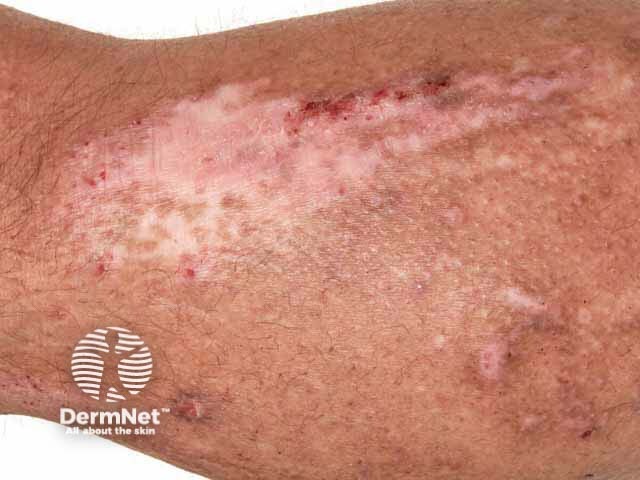
Leukoderma in lichenified atopic dermatitis
What are the clinical features of leukoderma?
Leukoderma presents as a well-demarcated macule or patch of white skin with a normal surface texture or epidermal atrophy. The white patch itself is asymptomatic but there may be clinical features of the underlying condition.
Contact leukoderma is initially localised to the site of contact, with subsequent multiple small confetti-like white spots spreading beyond the known contact area.
Guttate leukoderma can be an early sign of Darier disease seen particularly in skin of colour. It often precedes the development of the typical keratotic papules and is distinct from post-inflammatory changes.
Melanoma-associated leukoderma can present as white areas of regression within the primary melanoma or the appearance of white patches distant from the melanoma.
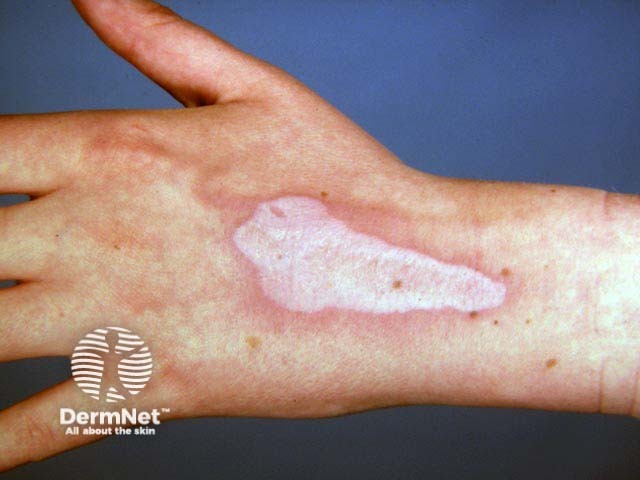
Chemical burn scar with leukoderma
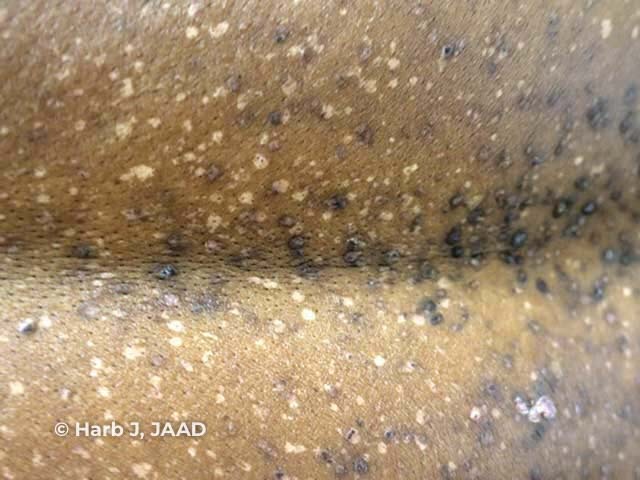
Guttate leukoderma in Darier disease
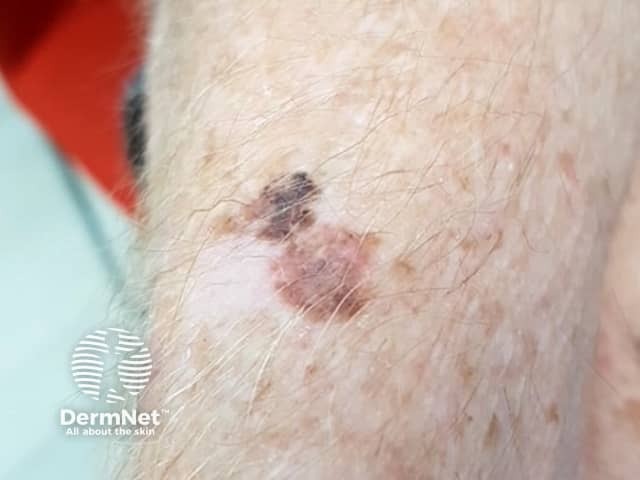
Melanoma-associated leukoderma
Image of Darier disease from: Harb JN, Motaparthi K. Clinicopathologic findings of guttate leukoderma in Darier disease: a helpful diagnostic feature. JAAD Case Rep. 2018;4(3):262–6.
How do clinical features vary in differing types of skin?
Leukoderma is more obvious in racially pigmented or tanned skin compared to ethnic white skin.
What are the complications of leukoderma?
- Psychosocial and cosmetic effects
- Susceptibility to sunburn and perhaps the development of skin cancer

Facial vitiligo is likely to have psychosocial effects
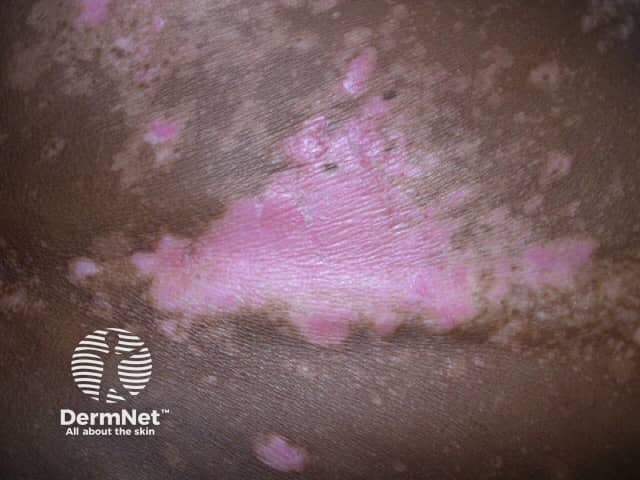
Sunburn in vitiligo
How is leukoderma diagnosed?
Leukoderma is a clinical diagnosis confirmed on Wood lamp examination.
Dermoscopy can be helpful in the diagnosis of some forms of leukoderma. [see Dermoscopy of vitiligo, Idiopathic guttate hypomelanosis dermoscopy]
Skin biopsy is not routinely required but can confirm the absence of melanocytes and/or melanin in the epidermis. A biopsy may be taken to determine an associated underlying skin condition.
What is the differential diagnosis for leukoderma?
- Hypopigmentation of any cause
- Vascular causes of skin pallor such as Bier spots and naevus anaemicus
What is the treatment for leukoderma?
- Sun protection
- Cosmetic camouflage
- Treatment of an associated or underlying cause
- Surgery — melanocyte grafting [see Surgical treatment of vitiligo]
What is the outcome for leukoderma?
Leukoderma may recover slowly if the cause can be avoided, such as cessation of a drug or chemical exposure, or treated such as inflammatory dermatoses. Leukoderma of the congenital patterned form or due to scarring is likely to be stable and persistent.
Bibliography
- De Schrijver S, Theate I, Vanhooteghem O. Halo nevi are not trivial: about 2 young patients of regressed primary melanoma that simulates halo nevi. Case Rep Dermatol Med. 2021;2021:6672528. doi:10.1155/2021/6672528. Journal
- Failla CM, Carbone ML, Fortes C, Pagnanelli G, D'Atri S. Melanoma and vitiligo: in good company. Int J Mol Sci. 2019;20(22):5731. doi:10.3390/ijms20225731. Journal
- Harb JN, Motaparthi K. Clinicopathologic findings of guttate leukoderma in Darier disease: a helpful diagnostic feature. JAAD Case Rep. 2018;4(3):262–6. doi:10.1016/j.jdcr.2017.09.021. PubMed Central
- Harris JE. Chemical-induced vitiligo. Dermatol Clin. 2017;35(2):151–61. doi:10.1016/j.det.2016.11.006. PubMed Central
- Kuriyama S, Kasuya A, Fujiyama T, et al. Leukoderma in patients with atopic dermatitis. J Dermatol. 2015;42(2):215–18. doi:10.1111/1346-8138.12746. PubMed
- Maranda EL, Wang MX, Shareef S, Tompkins BA, Emerson C, Badiavas EV. Surgical management of leukoderma after burn: a review. Burns. 2018;44(2):256–62. doi:10.1016/j.burns.2017.05.004. PubMed
- Naveh HP, Rao UN, Butterfield LH. Melanoma-associated leukoderma - immunology in black and white? Pigment Cell Melanoma Res. 2013;26(6):796–804. doi:10.1111/pcmr.12161. Journal
On DermNet
- Albinism
- Alezzandrini syndrome
- Contact dermatitis
- Dermoscopy of melanoma
- Lasers in dermatology
- Metastatic melanoma
- Pigmentation disorders
- Vogt-Koyanagi-Harada syndrome
Other websites
- Congenital patterned leukodermas — Medscape
